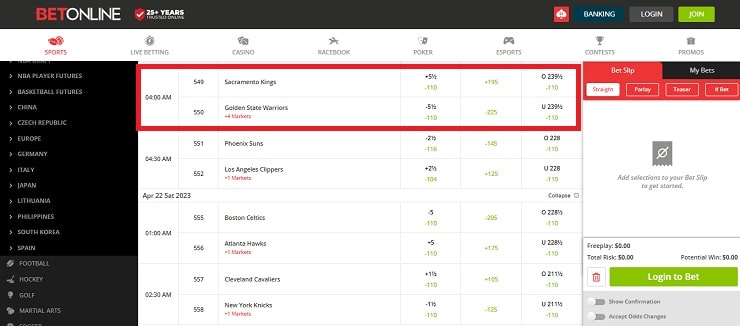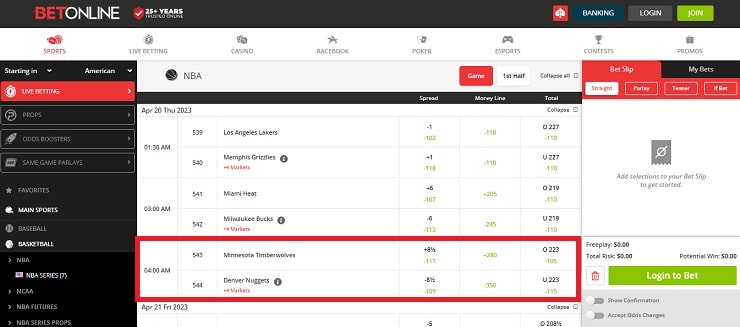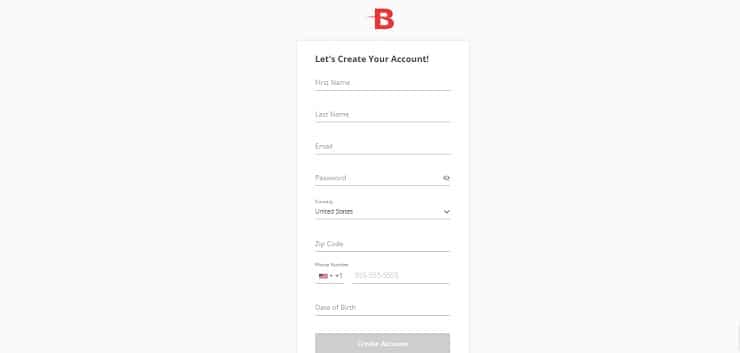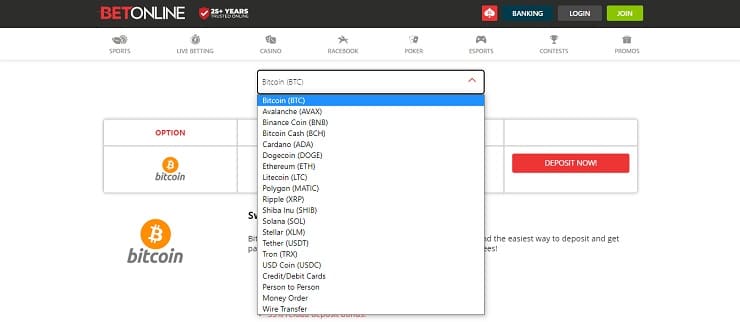A point spread is the difference in score that sportsbooks use between two teams, where one team is a clear favorite, to level the playing field and make betting more exciting with better odds. Since it’s one of the most popular lines on online betting sites, it’s crucial to know how point spreads function and how to place bets on them.
So, we created this guide to fill you in on all the necessary details, from how these odds work, what they mean, how to read these odds, and how they apply to different sports. We also show you how to sign up with an online sportsbook so you can place these bets yourself.
What is a Point Spread?
A point spread is a betting line that applies a handicap to a bet, ensuring that one team must win or lose by a certain margin. Generally, bookies do this when there is one clear favorite in terms of skill and performance to give the underdogs an advantage when the game begins. This levels out the playing field by increasing the chances for the underdog and making it more difficult to bet on the favorite, creating more exciting odds.
Sportsbooks determine the number of points to add or subtract from a team based on their research. While point spread betting is available for most sports (teams and individual athletes), they apply predominantly to football and basketball.
Handy Tip:
Point spreads are typically displayed in a half-point format. This means there must be a winner or a loser in the bet, as the .5 ensures there cannot be a tie.
The Point Spread Explained – How Does a Point Spread Work?
Now that we know what a spread is, we can begin to better understand how it all works.
If we consider the NBA game example below, you can see the betting markets for the Sacramento Kings and the Golden State Warriors. By looking at the spread betting lines (shown in the first column), we can tell the following:
The Sacramento Kings must be the underdogs. This is because their spread odds have the plus sign (+) in front of their odds – (+5.5), meaning they are starting with the advantage on the spread, as they are not expected to do as well.
In contrast, the Golden State Warriors are the favorites because the negative value sits next to their name.

But what does this all mean?
The point spread refers to the number of points a team must win by in order to settle their stake. In the case of our example, the following applies:
The Sacramento Kings must either win the match outright or lose by fewer than 5.5 points for bettors backing the underdog to win their bet. If either of these outcomes occur, a bettor would then receive a payout of -110 odds. But, if the Sacramento Kings lose the game by six points or more, the bet will end up losing.
In contrast, the Golden State Warriors must not only win the game, but they must score more than 5.5 points for a bettor backing the favorite to win their wager. In other words, if the final score is GSW 32-26 SK, where there is a six-point differential, bettors backing the favorite (Golden State Warriors) will win their bet at odds of -110. But, if the score ends up as GSW 32-30 SK, where the favorite only wins by two points, the bettor loses their bet.
Handy Tip:
The odds in this example are displayed in the most common American format. European and Asian spreads differ considerably. In Europe, a spread is referred to as a handicap, and you can learn more about handicap betting here.
How to Read a Point Spread – Understanding the Odds
When it comes to reading the odds for a point spread, there are several things to consider, as we need to understand two lots of numbers. So, let’s turn to our example below:

Here, we have an NBA match against the Minnesota Timberwolves and the Denver Nuggets, with the point spread as follows:
- Minnesota Timberwolves: (+8.5) -111
- Denver Nuggets: (-8.5) -109
When looking at the first number next to the Minnesota Timberwolves, we read the point spread. As they are not the fancied team, Minnesota must win outright or avoid defeat by more than 8.5 points. Should either instance, the player will win their spread bet. But how much will they win?
The second number is now the important one. Here, the odds for the Timberwolves are set at -111, which means a bettor must put down $111 to win back $100. (It is important to note that the bettor doesn’t have to put down $111 exactly, this is just a guideline that bettors can use to calculate how much they will win back based on their own stake.)
In contrast, looking at the lines for the Denver Nuggets, this team is the favorite. If someone were to place a bet on their side of the spread, they would need to win by at least 8.5 (or 9 in effect) points for that bet to win. If the bettor wins, they will receive odds of -109, which means they must wager $109 to win back $100. Again, this figure is a benchmark that bettors can use to calculate how much they will earn off the stake they wager.
Handy Tip:
Due to spread betting evening up each match-up, the market can end up showing two teams on negative numbers. In that case, the favorite bet would be the negative number furthest from zero. So, if you saw odds of -112 for Team A and -106 for Team B, Team A would be considered the favorite as you would have to put down more money ($112) to win back $100 than you would if you backed the underdog.
What Do and – Mean in a Point Spread?
When reading the odds for the various betting lines, these come with a plus (+) or minus (-) sign.
The minus sign highlights the team the sportsbook sees as the favorite (the team or athlete most likely to win). While the plus indicates the underdog. However, these mean different things when looking at the margin of victory and the odds or payout value.
In a point spread, these symbols mean the following:
- If the + sign is seen next to a team in a spread, they are considered to be the underdog in that match. Because of this, a bet on them may still be rewarded even if they lose, as they may have had enough of a points head start on the spread.
- By contrast, the – symbol shows that a team is the favorite and must win by an even greater margin for the spread bet to land. A team with a spread of 6.5 must win by more than seven points for this to be the winning bet.
When reading the odds of a spread bet, generally, the odds are balanced at -110 because of the points applied. In this case, bettors must wager $110 to win back $100 on their bet. However, sometimes this differs, and one team will have positive odds, and the other will have negative ones.
The plus and minus in the odds also highlight the favorite and the underdog, but they mean something different than when applied to a point spread. Instead of showing how a team or athlete must perform, they show how much a bettor will earn off a bet on that team.
When looking at the odds, the plus and minus mean the following:
Let us look at this example: Team A +134 and Team B -145.
- The bettor will win $134 on a $100 wager for Team A to win at odds of +134.
- A wager of $145 would have to be placed on Team B to win $100 should they be successful.
Handy Tip:
You can read even more about the + and – in betting odds, read our informative article here.
What is Betting Against the Point Spread?
When placing point spread bets, bettors will come across several terms. One of them is betting Against the Spread (ATS), which refers to when a bettor backs the underdog or puts their money on the team with the positive (+) number. Since most bettors are likely to back the favorite (the team with the minus number), placing a bet on the underdog is seen as going against the norm and, thus, going against the spread.
Handy Tip:
While this is unusual, there are several reasons why a bettor may back the underdog, and you can read more about underdog betting in our informative article by clicking here.
What Does Covering the Spread Mean?
Another popular term among the best online sportsbooks and bettors is “covering the spread.” This refers to when the favorite scores the exact or more points dictated by the point spread to beat the underdog.
For instance, if you look at our example below, this NBA match has the Phoenix Suns facing off against the Los Angeles Clippers. In this case, the Phoenix Suns (-2.5) -116 are the favorites. If they win the game by three points or more (for example, with a score of Suns 100-96 Clippers), they will have covered the spread and met the target set out by the spread.

What Does it Mean to Beat the Spread?
The term “beating the spread” is another popular phrase used by sportsbooks and bettors. Beating the spread refers to the opposite outcome of covering the spread, where the bettors backing the underdog win their bet. In other words, if we look at our example again, if the Los Angeles Clippers (+2.5) -104 won the game outright or lost by less than the 2.5 points outlined by the sportsbook, they would have won and “beat the spread.”
What is the Closing Line Value in Point Spread Betting?
Bettors who regularly place point spread bets will tell you that sportsbooks typically release their spread lines one week before the sports match is scheduled to take place. However, it is common for these values to change and fluctuate during the course of the week. Several aspects affect these lines, from player injuries to the weather (particularly for baseball), and even changes to the lineup.
Just before the game gets underway, the sportsbook will then set a final, fixed point spread, and this is called the closing line. Bettors often measure their wagers against the CLV (closing line value) to see whether they placed their wagers at the right time to get the greatest advantage.
For example:
Suppose a sportsbook releases a spread for the Boston Celtics at -4.5 in their game against the Atlanta Hawks at the beginning of the week, and a bettor takes this bet, but then the sportsbook adjusts the spread to have the Celtics at -5.5 on game day. In that case, this is a good bet, as the bettor will need the team to win by one less point than those who took the same bet on the day of the game.
How to Bet on a Point Spread
Bettors can wager point spread bets on most sports. But before they can do so, they will need to sign up with a sportsbook, create a profile, claim their welcome bonus, and fund their account. Luckily, this process is quick, and we take you through the steps below, so you can get wagering sooner.
In this guide, we use BetOnline as our example, but most sportsbooks use a very similar registration process, so you can apply this to any of the BetOnline alternatives you may choose. So, let’s look:
Step One – Register with BetOnline
Launch the BetOnline website and on the homepage, click the green “Join” button. Next, add your details on the registration form that opens, and come up with a username and password. Then, click “Create Account.”

Step Two – Get Verified
Once you’ve registered your account, BetOnline emails you a verification link which you must click to activate your new profile.After you’ve headed to your inbox and done this, use your new credentials to sign back into BetOnline’s website and access your profile.
Step Three – Make Your First Deposit
Next, it’s time to deposit funds. So, start by clicking the blue “Banking” button on the homepage. Then, select your payment method from the dropdown menu, and type in the amount you want to deposit. Your next step, (this one is very important if you want that bonus), is to type your BetOnline promo code “BOL1000” in the promo code box provided. Finally, click “Deposit Now” and follow the prompts to finish making your deposit.

Step Four – Choose Your Sport
Click on the “Sports” tab on the BetOnline homepage. Then, select the sport you want to place your point spread bets on, for example, basketball. Next, from the options available for this sport, select the league and match you want to put your money on; for instance, we chose the NBA.

Step Five – Place Your Wager
Once you have selected the game, click on the spread betting line for the team you want to back to populate your bet slip with the relevant details. Next, add the amount you wish to wager onto your bet slip. Then, click “place bet,” and you’re done!

Point Spread Betting in Sports Wagering
The best offshore sportsbooks and regulated sports betting sites offer point spread betting on most sports. However, they work better with some sports than others. Below, we take a closer look at the most popular sports for spread betting.
NBA Point Spread Betting
Basketball is one of those sports where the majority of the action happens toward the end of the game, with the score and the lead frequently changing in the last 10 minutes of the match. Because of this, the spread applied to NBA games by the best basketball betting sites is usually low and sits between +/- 3 and +/-7. However, there is always an exception to the norm. For example, if the team at the top of the log were pitted against the team at the very bottom, you may find a spread around the +/- 10.5 or +/-13 mark.
NFL Point Spread Betting
The NFL point spread works the same way as that for NBA betting. However, while the best NFL betting sites will have a relatively narrow margin set between opposing pro teams, bettors will often find that the margin for a college football point spread is much wider.
Generally, this is because there are often huge blowout wins in the NCAAF (and the NCAAB), and as a result, the spread can sometimes sit around +/-28.
MLB Point Spread Betting
The best MLB betting sites offer point spread bets on baseball games too. While these work the same way as those provided for NFL and NBA betting, they have a unique name, the runline. This is because baseball players score in runs rather than in points or goals. Additionally, the spread in runlines for the MLB is always 1.5, which means a team must win by two runs or more.

The Pros and Cons of the Point Spread
Point spread bets offer bettors greater odds and a unique way to back their favorite teams other than placing a moneyline bet. While these wagers often offer improved chances of winning a bet, they can also be challenging for new bettors to understand. So, let’s review the pros and cons of these point spread bets:
Pros:
- Provides greater odds when backing the favorite
- Can be used in parlays and live betting
- Offers improved chances of winning
- You can back the underdog and have better chances of winning
Cons:
- The lines with these bets are usually tighter (around -110)
- New bettors may find these lines confusing at first
Why Shop Around for Lines When Placing Point Spread Bets?
One of the best and easiest ways to maximize your payouts on winning bets is by line shopping. Line shopping refers to visiting different online sportsbooks to see what odds they offer for the same sports game. By doing this, you can uncover the best odds for a point spread on a particular match and increase your payouts. Line shopping sees bettors looking for the best spread betting line for their prediction.
Point Spread Betting Conclusion
A point spread provides bettors with more room to move, offers greater odds, and makes placing profitable wagers on the favorite possible. Point spread betting adds excitement to any game but provides some of the best betting options for basketball and football betting fans. Although tricky to read at first, these lines often offer superior betting options to a moneyline, making them the top choice among many avid sports bettors.

